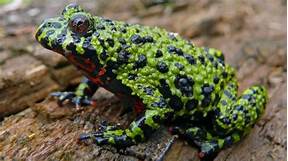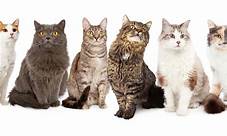What Frogs Make Good Pets?
Frogs make unique and fascinating pets, but not all species are suitable for captivity. Some frogs require specialized care or have complex needs that make them challenging for inexperienced keepers. For those new to frog keeping, certain species are ideal for beginners due to their hardiness, adaptability, and manageable care requirements.

Choosing the Right Frog Pet
1. Consider Your Experience Level:
- If you're a beginner, choose a frog species that is easy to care for and has a forgiving temperament. Some species, like the African Dwarf Frog, are known for their resilience and adaptability.
2. Research the Frog's Natural Habitat:
- Understand the frog's native environment and try to replicate it in your enclosure. This includes providing appropriate temperature, humidity, and substrate (bedding).
3. Assess the Frog's Size:
- Choose a frog size that is appropriate for the size of your enclosure. Overcrowding can lead to stress and health problems.
Types of Frogs Suitable for Beginners
1. African Dwarf Frog:
- These small frogs are hardy and can tolerate a range of water conditions. They are also peaceful and can live harmoniously in groups.
2. Red-Eyed Tree Frog:
- These striking frogs are known for their vibrant coloration and large, expressive eyes. They require a humid environment and a tall enclosure to accommodate their climbing behavior.
3. Northern Leopard Frog:
- These frogs are relatively easy to care for and can tolerate a wide range of temperatures. They are active and playful, making them a fun addition to any vivarium.
Caring for Your Frog Pet
1. Provide a Suitable Enclosure:
- Choose an enclosure that is appropriate for the size of your frog and provides enough space for movement and climbing. Ensure the enclosure is escape-proof and has good ventilation.
2. Maintain Proper Temperature and Humidity:
- Use a thermometer and hygrometer to monitor the temperature and humidity levels in the enclosure. Adjust lighting and heating elements as needed to maintain the desired conditions.
3. Feed Your Frog a Balanced Diet:
- Frogs have varied diets depending on their species. Provide a variety of food items, such as live insects, frozen foods, and commercial frog food. Make sure to gut-load live insects with nutritious foods to ensure your frog receives essential nutrients.
4. Keep the Enclosure Clean:
- Regularly remove uneaten food, feces, and shed skin from the enclosure. Change the water in aquatic enclosures frequently to prevent contamination.
Conclusion
With proper care and attention, frogs can make fascinating and rewarding pets. By choosing a suitable species, providing an appropriate enclosure, and maintaining optimal conditions, you can create a thriving environment for your frog pet to flourish.
Declaration: All article resources on this website, unless otherwise specified or labeled, are collected from online resources. If the content on this website infringes on the legitimate rights and interests of the original author, you can contact this website to delete it.




